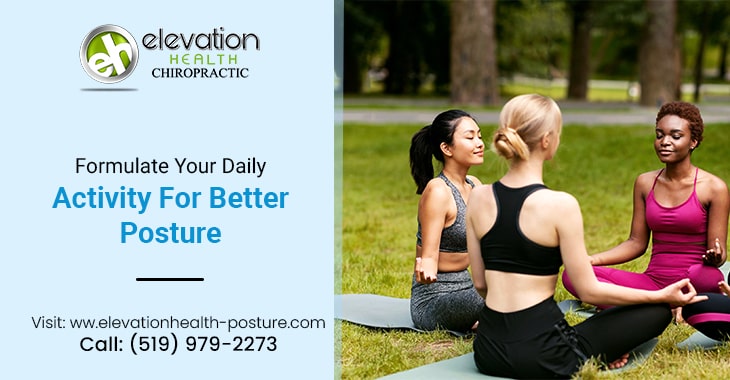Good posture is essential for maintaining overall health and well-being, starting at a young age. As parents, we play a vital role in helping our children develop healthy posture habits that will benefit them throughout their lives. Dr Brian Nantais, the esteemed chiropractor at Nantais Family Chiropractic, understands the importance of proper posture for children’s growth and development. Dr Brian Nantais, with his Nantais Family Chiropractic team, delivers Chiropractic Care at the Elevation Health clinic in Canada. In this blog, we will discuss some practical tips that parents can implement to improve their child’s posture easily.
- Be a Role Model
- Encourage Physical Activity
- Limit Screen Time
- Promote Active Sitting
- Strengthen Core Muscles
- Emphasize Proper Backpack Use
- Regular Chiropractic Check-ups
- Foster Open Communication
Be a Role Model:
Children learn by observing their parents’ behaviour. By maintaining good posture, you set a positive example for your child to follow. Sit and stand with proper alignment, keeping your shoulders back and your head held high. Your child will naturally imitate your posture, helping them develop healthy habits.
Encourage Physical Activity:
Regular exercise and physical activity are crucial for strengthening the muscles that support good posture. Encourage your child to participate in activities that promote strength, flexibility, and balance, such as swimming, yoga, or martial arts. These activities help develop core muscles, improve posture, and enhance overall body awareness.
Limit Screen Time:
Excessive screen time can contribute to poor posture in children. Encourage breaks from screens and limit the time spent on electronic devices. When using screens, teach your child about proper ergonomics, such as maintaining eye level with the screen, sitting with their back straight, and supporting their wrists.
Promote Active Sitting:
Encourage your child to engage in active sitting by using stability balls or cushions instead of traditional chairs. Active sitting helps activate the core muscles and promotes better posture by reducing slouching. It also allows for subtle movement and keeps the body engaged while seated.
Strengthen Core Muscles:
Strong core muscles are vital for maintaining good posture. Engage your child in exercises that target the core, such as planks, bridges, or leg raises. These exercises help develop a strong foundation and support the spine, reducing the risk of poor posture.
Emphasize Proper Backpack Use:
Improper backpack use can contribute to postural imbalances and strain on the spine. Teach your child to wear both backpack straps, distributing the weight evenly across their shoulders. Adjust the straps to ensure the backpack sits snugly against its back, promoting better posture and reducing the risk of discomfort or injury.
Regular Chiropractic Check-ups:
Regular visits to a chiropractor can be beneficial in assessing and addressing any postural imbalances or concerns in your child. Chiropractors, like Dr Brian Nantais, specialize in diagnosing and correcting postural issues. They can provide personalized advice, exercises, and adjustments to improve your child’s posture and overall spinal health.
Foster Open Communication:
Maintain open communication with your child about the importance of good posture and its impact on their health. Explain how good posture contributes to proper breathing, digestion, and well-being. Help them understand the long-term benefits of maintaining good posture as they age.
Bottom Line
Together with Dr Brian Nantais and the Nantais Family Chiropractic team at the Elevation Health Clinic in Canada, let’s foster an environment that promotes good posture and sets our children up for a lifetime of optimal health.








Recent Comments